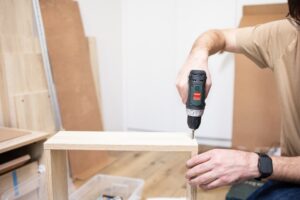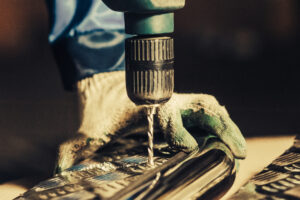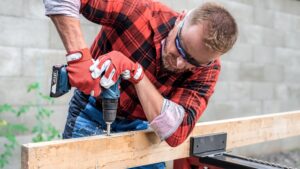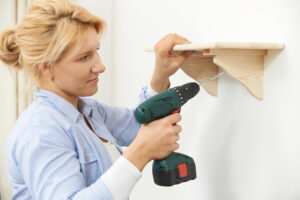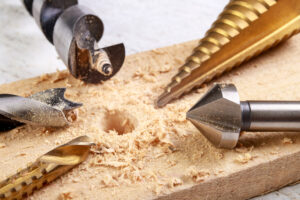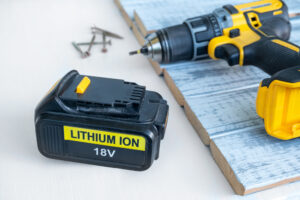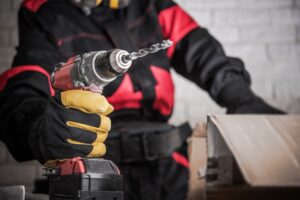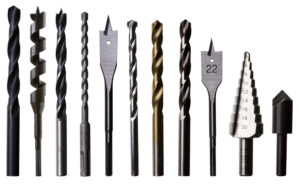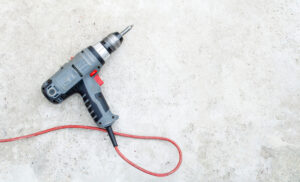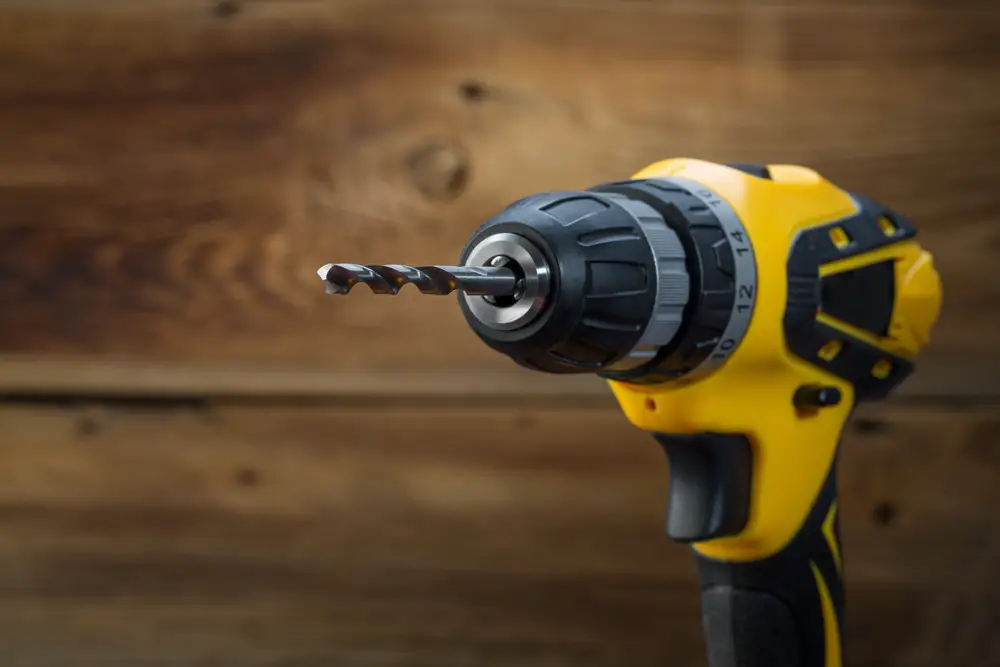
As a DIY enthusiast, I know how important it is to have a cordless drill that performs at its best. Whether you’re tackling small home projects or taking on more significant construction tasks, a reliable drill can make all the difference. That’s why it’s super important to take proper care of your cordless drill to ensure its peak performance and longevity. In this article, I’ll share some valuable tips on maintaining your drill’s performance, so you can always rely on it for your DIY projects.
Key Takeaways:
- Regular maintenance is vital for maximizing a cordless drill’s performance and lifespan.
- Cleaning and lubricating your drill regularly reduce friction and keep it running smoothly.
- Inspecting and replacing worn-out parts helps maintain optimal performance.
- Proper storage and handling prevent damage and ensure longevity.
- Operator training is crucial for safety and correct usage of the drill.
Importance of Regular Maintenance
Regular maintenance is crucial for keeping your cordless drill in optimal condition. By scheduling routine maintenance tasks such as lubrication, checking for wear and tear, and cleaning the machine, you can prevent breakdowns and ensure consistent performance. Good record-keeping of maintenance and repair schedules also helps in avoiding prolonged downtime and ensures the safety of the users.
When it comes to cordless drill usage, consistent and proper maintenance is key. Regular maintenance not only extends the lifespan of your drill but also maximizes its performance. By taking the time to care for your drill, you are investing in its longevity and efficiency, ensuring that it continues to serve you well for years to come.
To emphasize the importance of regular maintenance, let’s explore some of the key reasons why it should be a top priority:
1. Prevent Breakdowns
Regular maintenance helps identify and address potential issues before they turn into major problems. By checking for wear and tear, lubricating moving parts, and cleaning the drill thoroughly, you can prevent breakdowns and keep your drill running smoothly. This proactive approach eliminates the risk of unexpected malfunctions during crucial DIY tasks, saving you time and frustration.
2. Ensure Consistent Performance
A well-maintained cordless drill delivers consistent performance, ensuring that it operates at its peak efficiency on every project. By addressing issues like battery life, motor functionality, and chuck grip, you can optimize the performance of your drill and achieve professional results. Regular maintenance ensures that your drill remains reliable, efficient, and ready to tackle any task you throw its way.
3. Maintain User Safety
A properly maintained cordless drill is not only efficient but also safe to use. Regular maintenance, including inspecting the drill for any loose components or damaged parts, ensures that it operates within the manufacturer’s specified safety standards. By prioritizing maintenance, you reduce the risk of accidents, protecting both yourself and others who may use the drill.
4. Prolong Tool Lifespan
Maintaining your cordless drill helps extend its lifespan, saving you money in the long run. Regular care and maintenance prevent premature wear and tear, ensuring that your drill serves you well for many projects to come. With proper care, you can maximize the value of your drill investment and avoid the need for frequent replacements.
5. Enhance Overall Efficiency
A well-maintained drill operates at optimal efficiency, allowing you to complete tasks more quickly and effectively. By cleaning the drill, lubricating moving parts, and addressing any performance issues, you maximize the tool’s power and performance. This, in turn, improves your overall productivity and enables you to achieve high-quality results with ease.
| Benefits of Regular Maintenance | |
|---|---|
| Prevents breakdowns | Ensures consistent performance |
| Maintains user safety | Prolongs tool lifespan |
| Enhances overall efficiency |
A well-maintained cordless drill is a reliable companion for all your DIY projects. With proper care and attention, your cordless drill will continue to serve you well, project after project.
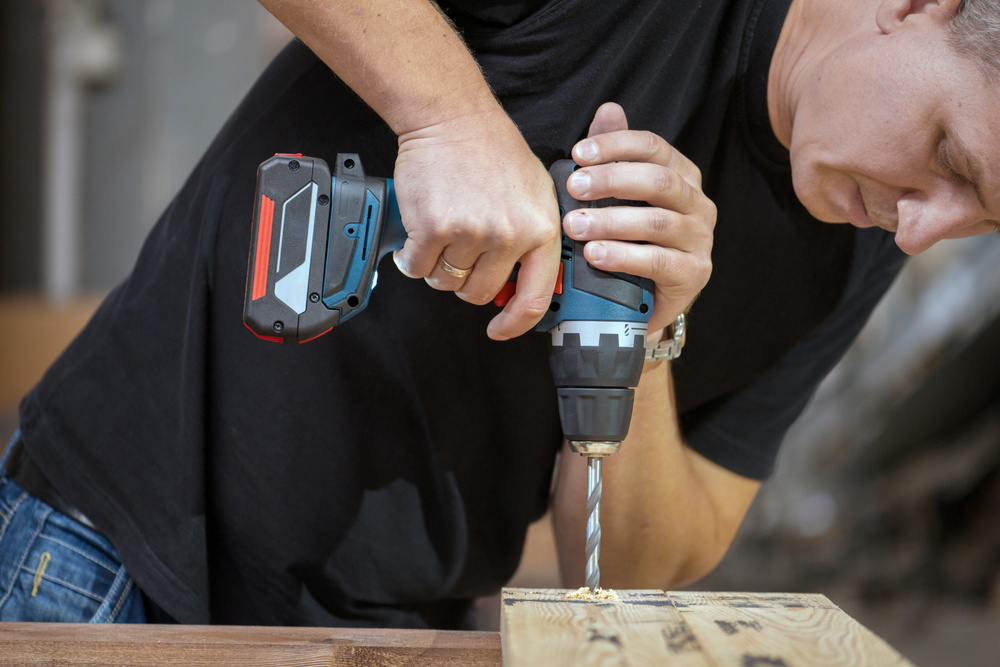
Cleaning and Lubrication
Regularly cleaning and lubricating your cordless drill is vital for its proper care and maintenance. By following the manufacturer’s instructions, you can effectively remove debris and prevent the build-up of dirt and dust that can hinder your drill’s performance.
When cleaning your cordless drill, make sure to use a soft cloth or brush to gently wipe away any dirt or dust from the exterior and crevices. Avoid using harsh chemicals or abrasive materials that may damage the drill’s surface.
For lubrication, use the recommended lubricant specified by the manufacturer. Apply a small amount of lubricant to the moving parts and gears to reduce friction and ensure smooth operation. This helps to keep the metal parts sharp and efficient, prolonging the lifespan of your drill.
To further enhance the performance of your cordless drill, consider investing in a cleaning kit specifically designed for power tools. These kits often include brushes, lubricants, and other maintenance tools that can make the cleaning and lubrication process easier and more effective. Alternatively, you can use a soft cloth and a mild solvent to clean the metal parts.
Regular cleaning and lubrication not only contribute to the overall performance and longevity of your cordless drill but also ensure safer and more efficient operation.
Inspection and Parts Replacement
Regularly inspecting your cordless drill for wear and tear is crucial for maintaining its performance. Vibration, friction, and high temperatures can contribute to the breakdown of drilling machines. To ensure optimal performance, it is essential to check and replace faulty parts such as seals, filters, drill bits, and precision cutters.
Component Inspection
Inspecting the individual components of your cordless drill is an important part of maintenance. Start by examining the drill housing for any cracks or damage. Check the grip and trigger for proper functionality, ensuring they are not loose or sticking. Additionally, inspect the battery compartment and charger for any signs of corrosion.
Next, focus on inspecting the drill’s moving parts. Examine the chuck, which holds the drill bits, to ensure it is securely fastened and free from debris. Check the gears and motor assembly for excessive wear or damage. If you notice any leaks, unusual noises, or abnormal vibrations during operation, it may indicate that a part needs replacement.
Part Replacement
When it comes to maintaining the performance of your cordless drill, replacing faulty parts is crucial. Start by consulting the drill’s user manual or the manufacturer’s website for information on compatible replacement parts. Ensure you have the necessary tools and follow proper safety precautions before attempting any repairs.
Common parts that may require replacement include seals, filters, drill bits, and precision cutters. Seals help to prevent dust and debris from entering the internal components, so replacing worn-out seals is essential for maintaining performance. Filters, such as air filters, play a vital role in preventing contaminants from clogging the drill’s motor, ensuring optimal airflow. Over time, drill bits and precision cutters can become dull or damaged, affecting the quality of your work, so it’s important to replace them as needed.
Proper alignment of components should also be checked during the inspection process. Misaligned parts can lead to inefficiencies and poor performance. Ensure that all parts are in their correct positions and properly secured before using the drill.
To help you keep track of the inspection and part replacement schedule, you can create a simple table as follows:
| Component | Inspection Frequency | Replacement Frequency |
|---|---|---|
| Seals | Every 3 months | As needed |
| Filters | Every 6 months | As needed |
| Drill Bits | Every 6 months | As needed |
| Precision Cutters | Every year | As needed |
Maintaining a schedule for inspection and part replacement will help you stay organized and prolong the life of your drill.
Proper Storage and Handling
When it comes to maintaining the longevity and performance of your cordless drill, proper storage and handling are key.
Storing Your Cordless Drill
It’s essential to store your cordless drill in a clean and dry environment. Moisture and dust can cause corrosion and affect the performance of the drill. Avoid storing it in areas with extreme temperatures, as this can also impact the battery life.
One effective method for storing your drill is by using carry cases. These cases not only protect the drill from dust and moisture but also provide a convenient way to transport it to different job sites. Additionally, hanging the drill on hooks or keeping it in storage bins can help prevent accidental damage.
Proper Handling and Usage
To prevent damage to your cordless drill and maintain its performance, it’s important to handle and use it correctly. Start by carefully reading and following the manufacturer’s instructions. This includes using the appropriate speed settings and drill bits for the task at hand.
When using the drill, apply gentle but firm pressure. Forcing the drill can lead to overheating or premature wear of the motor and gears. Additionally, always use the drill’s handle for a secure grip and better control.
Remember to avoid placing the drill on unstable surfaces or in positions where it can easily fall. Dropping the drill can cause significant damage to its internal components.
Importance of Operator Training
Proper operator training is essential for ensuring the safe and correct use of cordless drills. It not only contributes to the performance and longevity of the drill but also ensures the safety of the operator. By providing comprehensive training to operators and maintenance teams, we can minimize the risk of accidents and maximize the efficiency of these powerful tools.
During operator training, individuals learn how to operate and maintain the cordless drill according to the manufacturer’s guidelines. They are educated on the proper use of the drill, including understanding the various controls, adjusting the speed settings, and using the appropriate drill bits for different materials. Training also covers best practices for charging and replacing batteries, as well as any updates or changes to procedures.
Ongoing training is vital to keep operators up-to-date with advancements in drill technology and safety practices. Regular refresher courses help reinforce the knowledge and skills gained during initial training, ensuring that operators are always using the cordless drill correctly.
The Benefits of Operator Training
- Enhanced Safety: Operator training reduces the risk of accidents caused by improper use of the cordless drill. It promotes a safety-conscious mindset and teaches operators how to identify and avoid potential hazards.
- Improved Efficiency: Proper training increases operator proficiency, allowing them to complete tasks more efficiently. This translates into higher productivity and better quality work.
- Reduced Downtime: When operators are trained to handle the cordless drill correctly, the likelihood of equipment breakdowns and repairs decreases. This leads to less downtime and increased uptime for your projects.
- Prolonged Drill Life: By using the cordless drill in accordance with the manufacturer’s instructions, operators can extend the lifespan of the equipment. This saves on replacement costs and ensures consistent performance.
By empowering operators with the knowledge and skills they need, you can maximize the potential of these valuable tools while ensuring a safe working environment.
| Benefits of Operator Training | Details |
|---|---|
| Enhanced Safety | Reduces the risk of accidents caused by improper use of the drill |
| Improved Efficiency | Increases operator proficiency, leading to higher productivity |
| Reduced Downtime | Decreases equipment breakdowns and repairs, resulting in less downtime |
| Prolonged Drill Life | Extends the lifespan of the cordless drill, reducing replacement costs |
Conclusion
By following the maintenance tips and prioritizing proper care for your cordless drill, you can maintain its peak efficiency and ensure its reliability for all your DIY projects. Regular cleaning and lubrication, along with routine inspection and part replacement, are key to maximizing the performance and longevity of your drill.
Remember to always follow the manufacturer’s instructions for cleaning, lubricating, and handling your drill. The right storage and handling techniques play a significant role in preventing damage and prolonging the life of your cordless drill.
Operator training is crucial for using the drill safely and effectively. By investing in training for yourself or your team, you can prevent accidents, ensure correct drill usage, and further extend its lifespan.
With proper maintenance and care, your cordless drill will serve you well in your DIY projects, enabling you to work efficiently and achieve professional results.
FAQ
Why is regular maintenance important for maintaining drill performance?
Regular maintenance is crucial for keeping your cordless drill in optimal condition. By scheduling routine maintenance tasks such as lubrication, checking for wear and tear, and cleaning the machine, you can prevent breakdowns and ensure consistent performance. Good record-keeping of maintenance and repair schedules also helps in avoiding prolonged downtime and ensures the safety of the users.
How often should I clean and lubricate my cordless drill?
It is recommended to clean your cordless drill after every use to remove debris and prevent the build-up of dirt and dust. Lubricating the drill should be done according to the manufacturer’s instructions, but typically it is advised to do it every few months or whenever you notice increased friction and resistance.
What should I inspect for wear and tear on my cordless drill?
Regularly inspect your cordless drill for any signs of wear and tear. Check for loose or damaged parts, such as seals, filters, drill bits, and precision cutters, and replace them if necessary. Additionally, make sure the components are properly aligned to maintain the quality of work produced by the drill.
How should I store and handle my cordless drill?
To ensure the longevity and performance of your cordless drill, it should be stored in a clean, dry environment, away from extreme temperatures. Using carry cases, hanging the drill on hooks, or keeping them in storage bins can help prevent damage and maintain organization. It is also important to follow the manufacturer’s instructions for operating the drill correctly, including using the appropriate speed settings and drill bits, to prevent damage and maintain performance.
Why is operator training important for using a cordless drill?
Proper operator training is essential for using the cordless drill safely and correctly, which in turn contributes to its performance and longevity. Operators and maintenance teams should receive training on how to operate and maintain the equipment, including any updates or changes to procedures. Ongoing training helps in preventing accidents, ensures the drill is used correctly, and prolongs its life.
How can I maintain peak efficiency in my cordless drill for my DIY projects?
By following these maintenance tips and taking proper care of your cordless drill, you can maintain its peak efficiency and ensure its reliability for all your DIY projects. Regular cleaning, lubrication, inspection, part replacement, and proper storage are key to maximizing the performance and longevity of your drill. Remember to always follow the manufacturer’s instructions and prioritize operator training to use the drill safely and effectively.
- Drill Battery Maintenance: Essential Tips for Cordless Drill Battery Care - February 5, 2024
- Troubleshooting Drill Issues - February 5, 2024
- Quick Drilling Techniques - February 2, 2024

